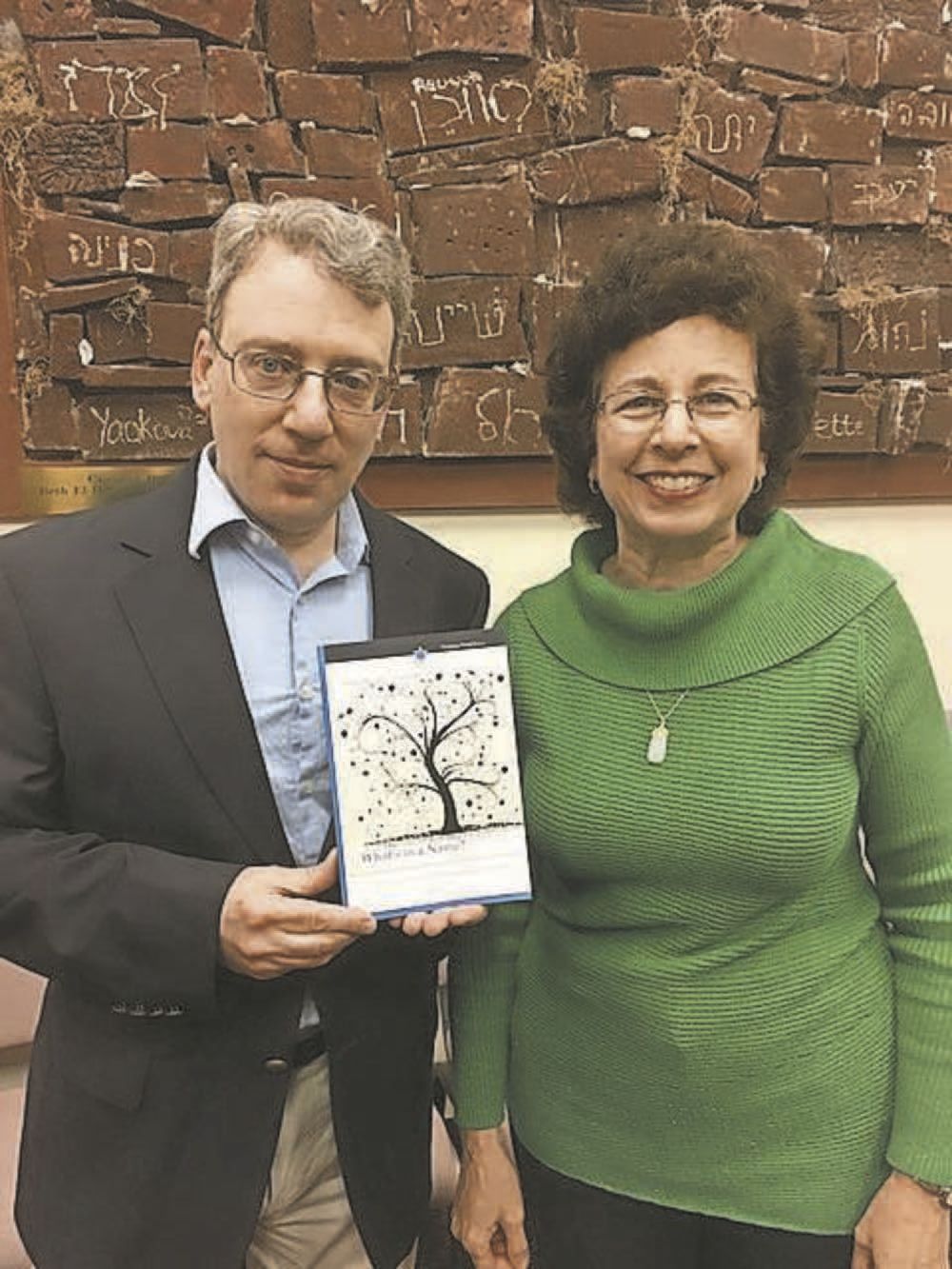By Steve Guggenheim
It started back in second grade. Seven-year old Stephen Cohen received a homework assignment to find out where his family was from. For Caryn Alter, it was college. She had to do a paper on her family. Little did they realize it at the time, but what those two assignments did for each of them was to start a lifelong interest in genealogy.
Cohen, who lives in Hightstown, and Alter, who lives in East Windsor, are both members of Beth El Synagogue in East Windsor. They started attending the synagogue’s Genealogy Club. The two also are members of a choir and commuted together to practice and would regularly talk about genealogy. They realized there wasn’t any book to help children who wanted to find out about their family’s heritage. Out of that came the seeds for a book titled, “What’s In a Name,” even though neither had ever written a book before.
The book took seven months to write and was published in March by Hadassa Word Press. The subtitle is, “A Young Person’s Jewish Genealogy Workbook.” Both had in mind similar ideas of what should be included. They split up the book. Karen would write a chapter with input from Steve and vice versa. Some chapters they did together.
So, what’s in a name? They say someone’s name can be the key that opens up the door to their genealogy or family background. In the Jewish religion many are named after someone who has died. They are given a Jewish name that may or may not be similar to the English name. With the name you have the beginning of your research. For Caryn, family is why her name starts with a “C” instead of the more traditional “K.”
If you like solving puzzles, exploring mysteries and learning history then genealogy is for you. They also say it can unlock the mystery of things you like and things you don’t. Cohen says he found branches of his family that had similar traits. For example, one group was very musical.
Through research you also may discover certain customs that can help identify your background. Why does your family sing certain songs at the holidays, while another family sings something else? Why do you refer to certain things by one name, while another uses a different word for the same item? That may indicate where the family originated. They each found family members around the world they didn’t know existed.
The book is aimed at middle school kids, with a target age of 11-15. It’s really a workbook. One page has spaces to list traits they think may exist in their family. Another page has a checklist of items they may find in their homes that will be keys to their background – a driver’s license, a passport, pictures, identity papers and souvenirs are just a few of the things that may help unlock the past.
The book has a cautionary page for parents. Through research the children may discover unexpected things such as adoptions and divorces.
The two Beth El members say the thing that surprises them the most is how many people believe the workbook is not just for kids, but for adults starting out in their genealogical research. The book is published on demand. It can be purchased on Amazon, www.morebooks.de or at the Beth El gift shop.

